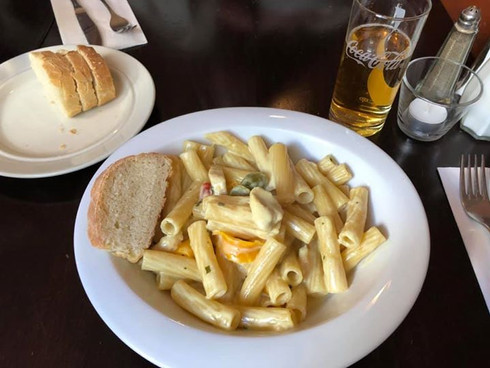A Saturday in Hamburg
- Sammy Kalski

- Feb 3, 2019
- 3 min read
USAC organized a trip to Hamburg as an optional addition to orientation weekend, which was already two weeks ago. It began with the Metronom train, which is free for Leuphana University students. It’s slower, but it still only took 30 minutes. I enjoy train rides, but they make me so sleepy!
Once we arrived, we took the bus to the Museum für Hamburgische Geschichte (Museum of Hamburg History) and did a tour called “A Thousand Years of Hamburg History.” I can’t believe that cities in Europe are a thousand years old – even older! My tour group went backwards, starting in modern-day Hamburg and working our way to the year 900. The tour focused on Hamburg’s growth over the millennia, specifically its harbor. In case you’re not up with your German geography, Hamburg is not a seaside city. It lays on the Elbe River, which is Hamburg’s economic life source. The Port of Hamburg is Germany’s largest, and it’s the third busiest port in Europe. As the city grew, the harbor moved to accommodate, and it’s still changing as maritime technology does too.

The two major things that stuck out the most to me were the Hamburg Fire of 1842 and the destruction during WWII. The fire started in a cigar maker’s shop – to quote our guide: “we don’t know what happened.” The city burned for three days. Despite destroying a third of the Altstadt (old city), there were only 51 deaths. My favorite fact is that the firemen blew up the Rathaus (city hall) to prevent the fire from spreading, which definitely didn’t work. City officials used the fire as a fresh start for improved infrastructure and planning.
Nearly 100 years later, Hamburg was destroyed again by Allied air bombings. Operation Gomorrah, named after the biblical story of Sodom and Gomorrah, was one of the biggest raids carried out by the Royal Air Force and the US Air Force. Construction workers are still finding unexploded Allied bombs across the entire country. It’s one thing to learn about the lingering effects of the war, but it’s another to see it for yourself (something very evident in Berlin, which I will share soon).
We walked to the Rathaus after the museum tour. It is massive – but it is not as old as it appears. After blowing up the original, Hamburg city officials couldn’t decide where and how to build their new city hall. It was finished in 1897, after 44 years of construction, and its architecture reflected the wealth and prosperity of Prussia during that time period.
It was already half past one, so my friends and I took to Google Maps to find food during our free time. We decided on La Tavola Calda, an Italian restaurant that was delicious and relatively cheap. Dining is Europe is a different experience. The waitstaff usually don’t introduce themselves, go through a daily special spiel, or check up on your table often as they do in the States. You are also responsible for asking for the bill when you are ready to leave. If you aren’t aware of this beforehand, the service will feel rude and unfriendly. Nonetheless, each dining experience is a fun time, especially when you have great company.

After that, we walked back to the Rathaus and enjoyed the fountain in the courtyard. As I was writing this, I learned that the statue is Hygieia, the Greek goddess of health and hygiene, surrounded by figures to represent the power and purity of water. It was erected as memorial for the cholera epidemic of 1892. The detailed architecture is simply breathtaking in the afternoon sunlight! We had a little time before we had to leave, so we explored the market square and found a WWI memorial along the waterfront.
Overall, Hamburg was a great trip! Like any city anywhere, there is so much to do – I feel as if I barely scratched the surface. I can’t wait to go back to do some more exploring.
















Comments